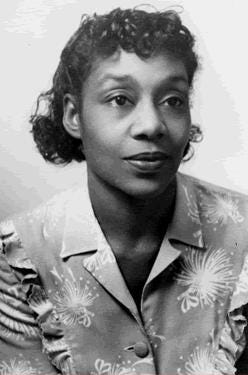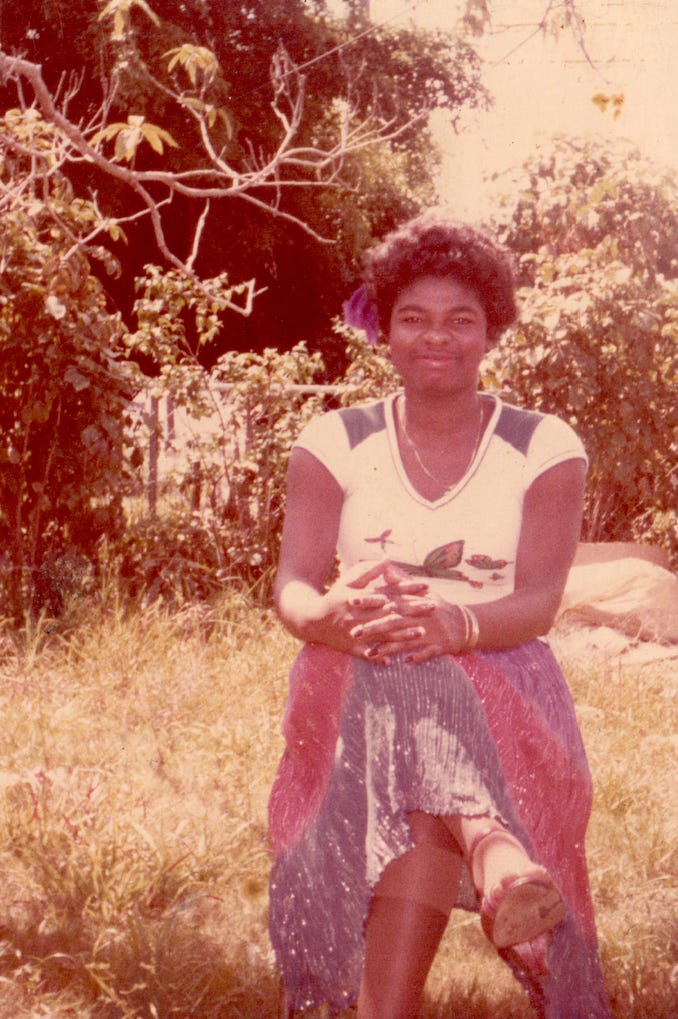The mainstream understanding of the Harlem Renaissance often lauds the work of Langston Hughes, who offered a stunning portrait of Black voices, or the work of W. E. B. Du Bois captured the emotional richness of Black life through sociological writings. These people were noteworthy, but they were not the only ones. There were individuals who left the American South, who studied at Hampton Institute, Lincoln School for Nursing, and Columbia University. During the early twentieth century, Harlem was saturated with a cascade of artists and professionals, a community that could be self-sufficient and creative African Americans pushed the boundaries of place and identity, expanding the literary and dynamic meanings of Blackness globally. They were drifters and shapeshifters who communed in the smoky basements where jazz musicians performed or the dancehalls where lovers swayed lightly on their feet. When most people think about that history, they often eschew the lesbian, transgender, gay, bisexual, intersex, and other queer people who navigated these spaces.
Queer Black people have always existed, and in Harlem, there were various zones where sexual minorities could be part of a sublime trance. This was a space where working-class and queer African Americans created a new cultural milieu. In Reconstructing Womanhood, Hazel V. Carby documents how assertive Black women incited a “moral panics,” for being free-spirited. Their character varied in some cases, being elegant, poised, and primed for a good time. Gertrude “Ma” Rainey, a blues singer, had both a husband and girlfriends. In her song, “Shave ’Em Dry Blues,” Rainey sang:
Here’s one thing I don’t understand,
Why a good-looking woman likes a workin’ man,
Hey, hey, hey, daddy, let me shave ’em dry.
The term, “shave ‘em dry” in modern terms means having aggressive sexual intercourse with a woman. Here, Ma is making a declaration that there is no reason for an attractive woman to chase after a man, and what she offers is to have sex with the woman. The song and others such as “Prove It on Me Blues,” were implicitly and explicitly about women loving women. Harlem’s queerness was not merely a rhetorical device hidden in song lyrics; it could be found in spaces such as Clam House on 133rd Street.
Owned by Gladys Bentley, the venue was an unorthodox shrine that pivoted from a musical space to a queer congregation. Nestled in the heart of Harlem, the Clam House hosted speakeasies that offered an intimate ensemble of entertainers. It was where patrons lingered and danced, where lovers could meet. Queer people were rooted in the decadent festivities, well dressed, free, and gorged in drunken revelry. These communities articulated the unspoken and spoken directives of a queer community that was, as Eric Garber has noted, “a spectacle in color.” Although a section of Harlem residents enjoyed the pleasures that the nightlife had to offer, the neighborhood and its jazz clubs were sometimes portrayed in a negative light.
Black women were also at the heart of the Harlem Renaissance, leaving an enduring mark on the cultural scene. There was the African American writer Angelina Weld Grimké, whose play Rachel was a coming-of-age story whose protagonist—after learning that her father was lynched—decided not to bear children. Instead, she fostered Black and Brown youth who needed a home. Then there was Dorothy West, a writer whose first short story, “Promise and Fulfillment,” was published in the Boston Post when she was fourteen. Although she never achieved the international reputation that Langston Hughes or W.E.B. Du Bois had, like them, written extensively and founded a magazine while living in Harlem. Her publication, Challenge, featured authors such as Richard Wright, Margaret Walker, and Ralph Ellison during the Great Depression. West worked for the Federal Writers Project and published a number of short stories in the New York Daily News. She once claimed, “I’m a writer; I don’t cook and I don’t clean.” (As a person who has gotten more immersed in my work, my sentiments sit with West’s declaration.) Grimké and West realized that writing could give them a touch of immortality even if the movement faded.
I lived in Harlem when I was earning my master’s in public health at Columbia University. Walking through the streets was a calculating affair, where the public frequency of robust encounters was direct and crass. Virtually every day was an opportunity to be immersed in a place that was filled with the heaviness of the past and the contradictions of the present: the church ladies—mostly elderly—who were brooding and ostentatious and the Black men who–without consent or eye contact–called me their “African Queen.” I was always indigent when I lived in Harlem, but as a Black person who found a way to have dinner parties with my friends, protest on the streets, and just blend in with the community, the area was a place where I felt grounded and at home.
In Berlin, where I live, protests across the country, also sparked national conversations about German anti-black racism. Many people, including some white Europeans I know, insist that racism is not as bad in Germany as it is in the US. But testimonies of brown and Black people living in Germany, tell a different story. Living in Berlin, I am engaging with a new history, a new set of memories, some of which are tied to the colonial ghosts. As I sit between this place of nostalgia and history, I a finding strength and beauty of creating new memories.
What I’m Working On
Writing Captive Contagions.
What I’m Reading
Kovie Biakolo | Nana Darkoa Sekyiamah Is Changing the Way African Women Talk About Sex
Morgan Parker | Confessions of a Perpetually Single Woman
Saeed Jones | A Spell To Banish Grief
Zoé Samudzi | An Object Not Meant to Object
What I’m Watching
My partner and I have been (re)watching Living Single, a 1990s sitcom that was created by Yvette Lee Bowser that centered on six friends living in Brooklyn, New York. With episodes between 20 to 25 minutes, the show weaved together their engagement with love and how they curated plans to get back at their enemies. Together we are thinking about how mesmerizing their banter is and the lessons they embark on as a collective. In my opinion, Living Single is a far better product than Friends (a show that ripped off the plot) but received far more accolades. You can read more about the history of 1990s Black television in Hannah Giorgis’s article in The Atlantic.
What I am Feeling
Last weekend, my aunt Fifi was buried in Miami. In my community, the family has always existed outside of the nuclear model, a reflection of how flexible we are in adapting to the new homes we create. We have cousins whose biological connections have been unknown, elders who brought us to dull political meetings, and kin who made us feel fabulous. Grief is heavy. It isn’t linear or progressive but I know that this period of mourning is also a time to celebrate the deceased. Fifi was a daughter, sister, aunt, wife, and surrogate mother. I am grateful to have said goodbye to her in Miami, on her hospital bed, two days before she passed away, to have reunited with some cousins, in my hometown, in its sun-tropical beauty. I hope that other people can have elders who bend the contours of what family means, who offer tenderness and pride to young and precocious minds. Although I do not have any family in Europe, I will pay homage to my kin across the pond for their love, tenacity, and grace.






